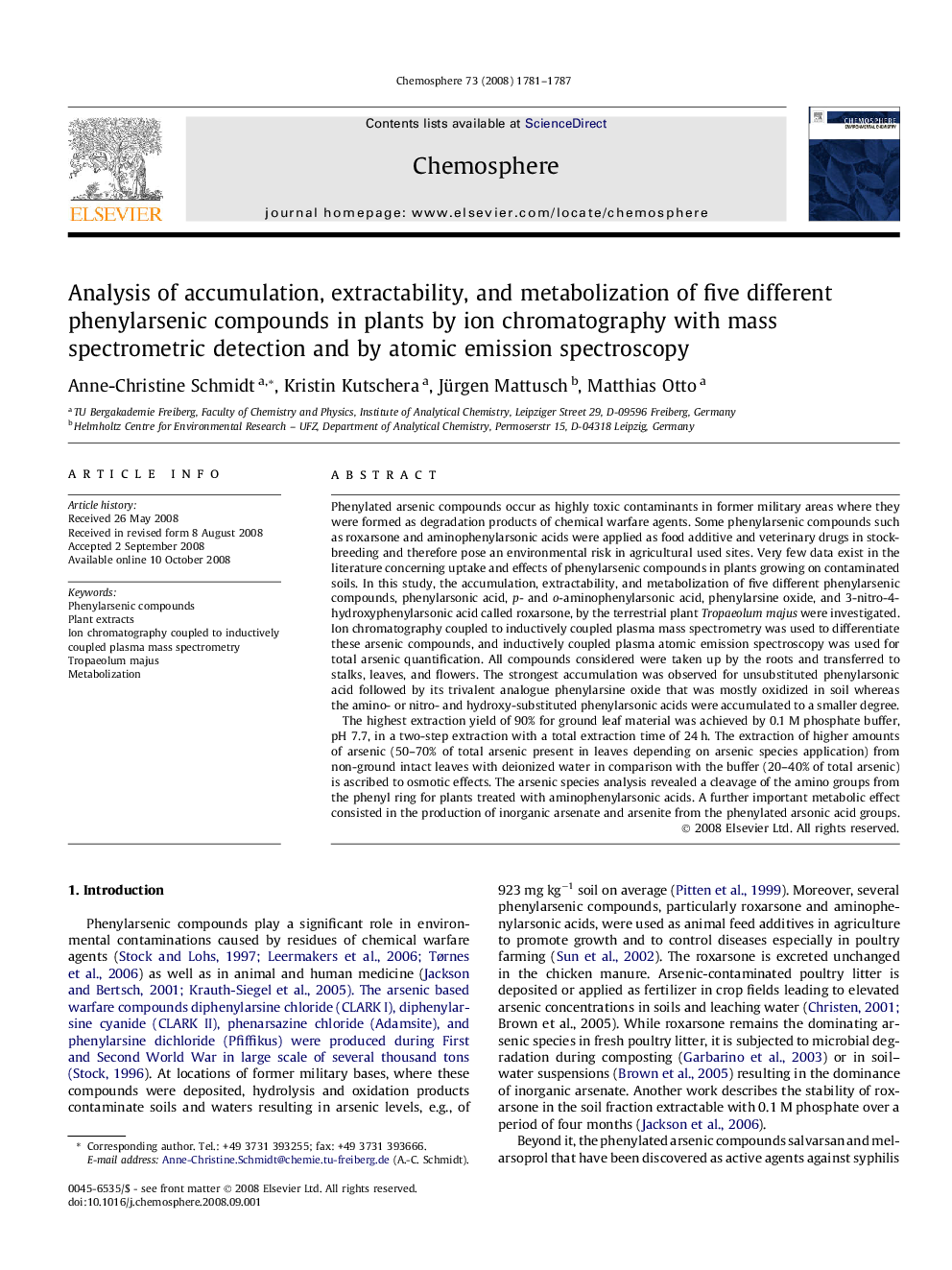| کد مقاله | کد نشریه | سال انتشار | مقاله انگلیسی | نسخه تمام متن |
|---|---|---|---|---|
| 4412784 | 1307652 | 2008 | 7 صفحه PDF | دانلود رایگان |

Phenylated arsenic compounds occur as highly toxic contaminants in former military areas where they were formed as degradation products of chemical warfare agents. Some phenylarsenic compounds such as roxarsone and aminophenylarsonic acids were applied as food additive and veterinary drugs in stock-breeding and therefore pose an environmental risk in agricultural used sites. Very few data exist in the literature concerning uptake and effects of phenylarsenic compounds in plants growing on contaminated soils. In this study, the accumulation, extractability, and metabolization of five different phenylarsenic compounds, phenylarsonic acid, p- and o-aminophenylarsonic acid, phenylarsine oxide, and 3-nitro-4-hydroxyphenylarsonic acid called roxarsone, by the terrestrial plant Tropaeolum majus were investigated. Ion chromatography coupled to inductively coupled plasma mass spectrometry was used to differentiate these arsenic compounds, and inductively coupled plasma atomic emission spectroscopy was used for total arsenic quantification. All compounds considered were taken up by the roots and transferred to stalks, leaves, and flowers. The strongest accumulation was observed for unsubstituted phenylarsonic acid followed by its trivalent analogue phenylarsine oxide that was mostly oxidized in soil whereas the amino- or nitro- and hydroxy-substituted phenylarsonic acids were accumulated to a smaller degree.The highest extraction yield of 90% for ground leaf material was achieved by 0.1 M phosphate buffer, pH 7.7, in a two-step extraction with a total extraction time of 24 h. The extraction of higher amounts of arsenic (50–70% of total arsenic present in leaves depending on arsenic species application) from non-ground intact leaves with deionized water in comparison with the buffer (20–40% of total arsenic) is ascribed to osmotic effects. The arsenic species analysis revealed a cleavage of the amino groups from the phenyl ring for plants treated with aminophenylarsonic acids. A further important metabolic effect consisted in the production of inorganic arsenate and arsenite from the phenylated arsonic acid groups.
Journal: Chemosphere - Volume 73, Issue 11, December 2008, Pages 1781–1787